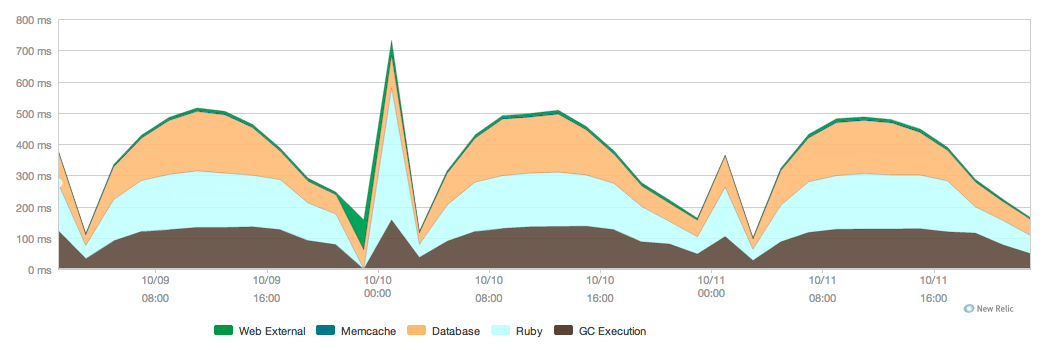Ruby 3x3: Ruby 3 will be 3 times faster
/At RubyConf 2015 in San Antonio, Yukihiro "Matz" Matsumoto announced Ruby 3x3. The goal of Ruby 3x3 is to make Ruby 3 be 3 times faster than Ruby 2. At AppFolio, we think this is awesome and want to help.
[Update: watch Matz's keynote ]
We have been using Ruby for the past nine years. Like most people, we initially came to Ruby via Rails. One of the main ideals of Rails was that developer happiness and productivity are more important than raw system performance. And Ruby supported that quite well. It's easy to write and easy to read. It follows the principle of least surprise. It's flexible and dynamic and perfect for DSLs. It even supports "seattle style".
But for all of Ruby’s virtues, it lacks speed. This isn't to say that performance hasn't improved over time: it has. But is Ruby fast yet? No. And today, the performance expectations are very different from those of nine years ago. Customers now expect more responsive web applications and APIs, developers expect a faster development environment (running rake, running tests, starting rails, asset compilation), and operations expects better utilization of cores and hardware resources. In other words, today we want developer happiness without sacrificing performance.
So, why hasn't Ruby been able to deliver better performance results? Jared Friedman argues that, in part, it's due to a lack of corporate sponsorship. In the case of PHP, it took Facebook to move it forward. In the case of JavaScript, it took Google to kick off the performance arms race. In the case of Ruby, Heroku has been sponsoring Matz, Koichi Sasada, and Nobuyoshi Nakada. That's great, but that's not enough. The development and maintenance of an entire programming language is a massive job. Performance optimization is a challenging problem, and it's only one of many important concerns in that effort. The Heroku three and the rest of the Ruby core team are going to need more support in order to satisfy today's performance expectations.
So, we at AppFolio would like to help. We have reached out to Matz and are proud to be part of the Ruby 3x3 effort.
Our plan is to hire a full-time engineer to work with the Ruby core team on performance. Ideally, we would find someone who is not only a strong C programmer but also has experience with one of other VMs out there (e.g. JVMs, JavaScript VMs).
So, what are the possible ways to make Ruby faster? Here are a few high level ideas:
- just-in-time compilation: a Ruby JIT is a very promising idea. After all, Java and JavaScript solved their performance issues with the introduction of JIT compilers. Interestingly, there was one experimental attempt at a Ruby JIT with RuJIT, a trace-based JIT. RuJIT showed 2x–5x performance gains but was very memory hungry. Perhaps, the RuJIT work can be revisited and improved. Or perhaps we need a new approach with a method-based JIT.
- ahead-of-time compilation: the concept is to reduce the time the Ruby VM has to spend before actually running a program. Aaron Patterson has already played around with this approach a bit.
- concurrency: despite the common misconception about the GIL, Ruby does support concurrency quite well in cases where IO is involved (making HTTP requests, reading a file, querying the database, etc). However, the Thread is a low level primitive, which makes it difficult to write concurrent programs correctly. There are gems like concurrent-ruby that provide higher-level abstractions, but we need these higher-level abstractions in Ruby itself to gain adoption and greater performance.
- optimize / remove GIL: in order to allow Ruby to be a viable option in the parallel computing realm, we need to remove the GIL.
- profile-optimize-rinse-repeat: of course, we cannot overlook the bread and butter of profiling existing parts of code and finding ways to optimize bottlenecks.
Let us know if you or someone you know is qualified and interested in the above problems (paul dot kmiec at appfolio dot com AND matz at ruby-lang dot org).
We're just one company among many whose businesses are built on Ruby, so we call out to the others:
Join us and help make Ruby 3x3 a reality.
P.S. If you'd like to contribute to the Ruby / Rails community at large, we suggest also taking a look at RubyTogether.org.
P.P.S. Thanks to John Yoder and Andrew Mutz for helping shape this post.




